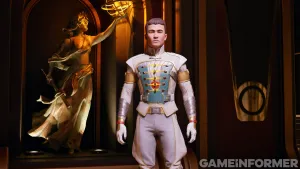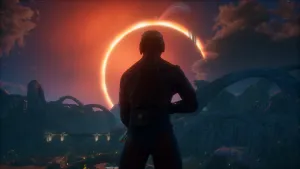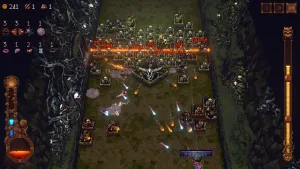Psychonauts in the Rhombus of Ruin Review
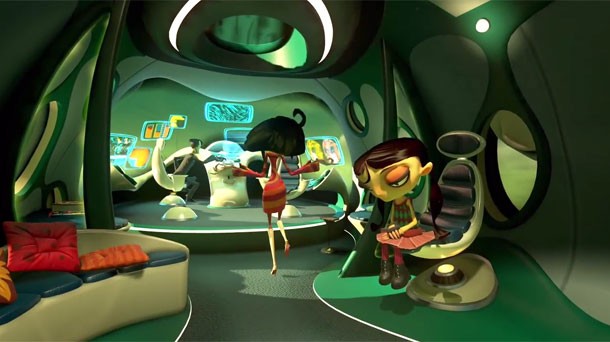
Psychonauts in the Rhombus of Ruin marks the return of Raz, Milla, Sasha, Lilly, and the rest of the psychically gifted crew, though it’s not completely triumphant. While reentering Double Fine’s imaginative world is great, it’s disappointing as both a VR experience and a Psychonauts spinoff.
Rhombus of Ruin starts immediately after the events of the first Psychonauts, with the team following up on a lead to rescue the kidnapped Grand Head of the Psychonauts (and Lilly’s dad), Truman Zanotto. Thanks to PlayStation VR, you board the Psychonauts’ jet as Raz and see the adventure through his eyes. Don’t get too comfortable, though, since experiencing the world through a variety of perspectives is a major part of the game. In an effort to avoid making people barf their brains out, Double Fine opted against giving players the ability to move around on foot. Instead, Raz uses his clairvoyant abilities to bounce around inside other characters’ heads, letting players check out different viewpoints and solve a variety of point-and-click style puzzles. The conceit fits nicely with the series’ psychic theme, even though the constant leapfrogging eventually feels limiting and tedious.
After the plane crashes into the mysterious Rhombus of Ruin – a slightly different take on the Bermuda Triangle – the team is separated and Raz uses his powers to reunite them. Thanks to an ability-dampening substance near the ocean floor, his powers are limited and his friends are stuck in bizarre delusions. Raz is still deathly afraid of water, but he overcomes it and shifts his consciousness between various fish and aquatic creatures to track down and rescue his scattered friends.
Rescuing them isn’t as easy as grabbing their lapels and shaking some sense into them. Instead, you have to figure out how best to tap into your abilities in multi-stage puzzles. In one early section, Milla won’t leave a school bus that’s wrecked far beneath the waves. It’s filled with odd creatures, but when you jump into her head, you see that she’s convinced that they’re terrified children that she has to rescue. Raz has to bring her back to reality in part by charging up the battery, which he does in a silly puzzle that involves electric eels and the bus stop sign. The puzzle is cute and clever, but as with a lot of things in the game, it relies too much on repeating the same steps. You get the single “Aha!” moment, and then you have to go through the motions several more times.
The act of moving around is a particular drag, especially when you’re in the open sea. You leapfrog from one critter’s mind to the next, waiting for the next one to swim into view. One of VR’s biggest draws is its ability to transport you to new places. Here, the deep ocean looks like a towering pile of uninteresting junk. It’s amusing at first, but you don’t get the grand sense of scale that should accompany the location, or a dizzying sensation when you look down at the murky depths. You do get a few moments where you feel the “presence” of another character, such as when Milla leans in close to you or you experience a tiny location through a small creature’s perspective. Ultimately, however, it doesn’t take much advantage of the tech’s novelty, which is presumably the justification for this entire game.
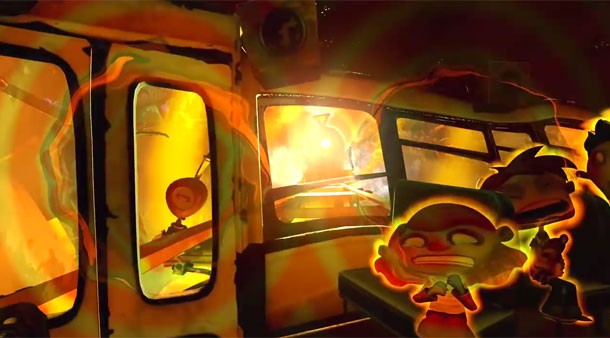
The action, too, suffers from concessions that virtual reality require. The plane crash won’t make you woozy, but at the expense of it being an unexciting bummer. Even during the climax, I didn’t get any real sense of peril or urgency. Instead, the entirety of the game is like moving from chair to chair, occasionally looking around for the next switch to pull or button to press. Some of the puzzles are quite clever, but they’re dragged down by the tiresome movement system and sometimes-fussy head-tracking.
I enjoyed the original Psychonauts, and it was fun to see the characters again – even though the circumstances are fairly lame. If you find yourself in the slice of the Venn diagram that overlaps “Psychonauts fan” and “PlayStation VR owner,” then it might be worth the couple of hours it takes to play through Rhombus of Ruin. Otherwise, this isn’t a great showcase for VR or an introduction to the Psychonauts.

Get the Game Informer Print Edition!
Explore your favorite games in premium print format, delivered to your door.
- 10 issues per year
- Only $4.80 per issue
- Full digital magazine archive access
- Since 1991



